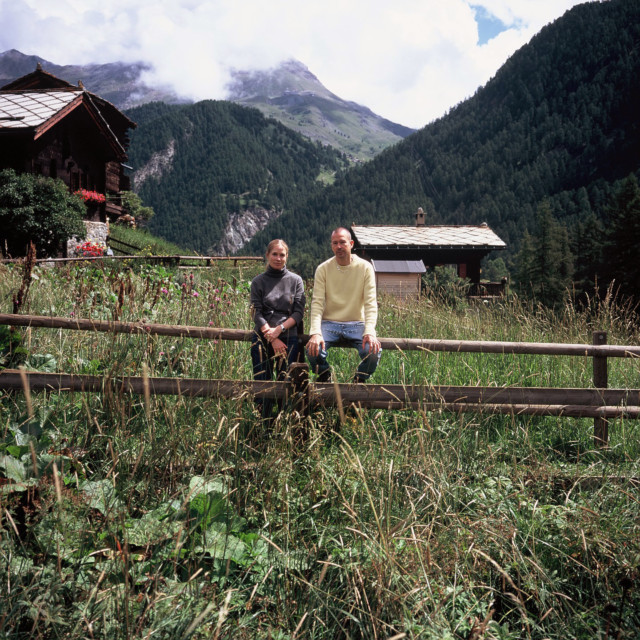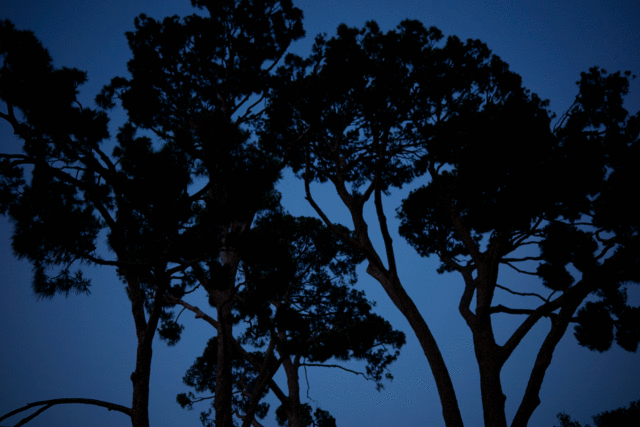








The jagged, pyramidal peak of the Matterhorn—which juts like the craggy tooth of a giant into the heavens, a majestic 4,478-metre summit that marks the Swiss andItalian borders, an Alpine imprint of myth, adventure and calamity—has an entrancing, magnetic appeal.
British explorer Edward Whymper, the first man to reach the peak of the mountain in 1865, had previously attempted to reach its near-symmetrical summit seven times. His successful ascent up the now typically traversed Hörnli Ridge was marred by notorious tragedy, as four members of his team were killed on their descent, plunging to their deaths when a faulty Manila rope snapped in two. Liverpool-based mountaineering Lucy Walker became the first female to reach the summit of the Matterhorn six years later, scrambling in a long skirt and sipping champagne as an expedition accoutrement—having already been the first woman to reach the peaks of the neighbouring Balmhorn, Eiger and Piz Bernina—and enthralled by the prospect of beating her American female contemporary, Meta Brevoort, to the top.
English artist, critic and philosopher John Ruskin visited Switzerland numerous times from childhood. In1849, he embarked on a five-month tour of the country, journeying from Vevey to Chamonix to Zermatt, arriving in the then sparsely populated town in August, and adding what is believed to be the first accurate drawing of the Matterhorn to a brimming portfolio of alpine sketches. German-American painter Albert Bierstadt also became enamoured with the natural majesty of the Matterhorn, first visiting Switzerland in 1856, and returning frequently between 1867 and 1897 to sketch its cloud-topped peak at sunrise.
Lucie Meier—who leads the creative helm of Mi-lan-based brand Jil Sander with her husband Luke – grew up with the sublime sight of the Matterhorn jutting into the crisp Swiss skyline. She was raised in Zermatt in southern Switzerland, the popular alpine town which lies at the foot of the mountain at the southern end of the Matter Valley, its quaint wooden-chalet-and-pine-tree-lined streets connecting to a vast plethora of hiking trails, mountaineering and cycling routes and ski and snowboarding pistes, accessed via cable cars, the tracks of underground funiculars and cog railways. “Zermatt has always been home,” Lucie says. “The more I have been away, and the more I go back, I start to increasingly understand and appreciate it.”
The awe-inspiring élan of the Swiss landscape struck Montréal-born Luke—who grew up in Vancouver, a city with a natural seaport into the Pacific Ocean—from his youth. “My father is Swiss and took us to his home country a few times when I was young,” he says. “I distinctly re-member visiting Zermatt and how huge the surrounding mountains felt.” More than 38 mountains with 4,000-metre-plus summits gather around the head of Zermatt’s surrounding valley. “Travelling there in the summer, even then you could feel the snow, ice and wind from the top of the peaks,” Luke adds. It’s a sense of awe shared by Wympher, who in his Scrambles Amongst the Alps in1860–69, remarks on his fifth ascent attempt of the southern side of the Matterhorn, “...even in cold blood one holds his breath when looking at its stupendous cliffs. There are few but equal to them in size in the Alps, and there are none which can more truly be termed precipices.
“Zum See is the name of the restaurant which Lucie’s parents Max and Greti opened in a small hamlet below the Matterhorn 37 years ago. In a 521-year-old chalet—with a wooden roof which is snow-topped in winter and has window boxes brimming with red geraniums in summer—the couple serve up traditional and Mediterranean-inspired dishes—incorporating ingredients from Zum See’s surrounding garden plots—including goulash soup, rösti with ham and eggs, and air-dried beef with cheese shavings. “There are so many good things there,”Lucie says. “The freshness of the vegetables in the salads, and the colour and taste of the honey which my dad har-vests is so particular. Simple tastes that are so much better because they come from natural sources.” For Luke, the restaurant’s rhubarb pie is unrivalled. “That alone is worth the trip,” he says.
Lucie and Luke return to Zermatt in spring, summer, autumn and winter, swapping the busy streets of the city and the frenetic urban energy of the Milanese metropolis for the breathtaking and sprawling natural landscape that surrounds it. “We are always outside, skiing, snow-boarding, hiking, touring,” Lucie explains. The duo haven’t embarked on any serious expeditions—it’s estimated that 3,000 people ascend the Matterhorn every year—but enjoy the long treks to various mountain huts that nestle out in a network throughout the valley and surrounding mountains.
“No true alpinism, but we love the journeys to theMonte Rosa Hütte and the Hörnlihütte,” Luke says. The spaceship-centric shining aluminium facade of the Monte Rosa Hütte, the first architectural iteration of which was built in 1894, sits between a series of glaciers at 2,883 metres above sea level. The traditional Hörnlihütte, which opened in 1880, sits 3,260 metres above sea level at the starting point to the ascent of the Matterhorn, where mountaineers can embark via the North Face, Hörnli or Zmutt Ridge.
Zermatt boasts the highest forest line in the Alps, and its sprawling meadows are home to rare perennial blooms and herbs, including the fuzzy white edelweiss—regarded as a Swiss national symbol—and the yellow-petalled arnica. The valley surrounding Zermatt also houses snow wormwood, dwarf rampion, sweet clover, umbel penny-cress, Haller’s ragwort, fringed sedge and hairy stitchwort. To Lucie, nature is at its most astonishing in autumn. “I prefer it when the trees are changing colour and the first snowfall could happen any time,” she says.
The pursuit of the organic and the majesty of Mother Nature has been central to Lucie and Luke’s vision for Jil Sander, since the couple joined the brand in 2017. Since the label’s inception in 1968, it has been associated with a purity of vision, a serendipity between the silhouette and clothing, a sense of ease, gentle elegance and subtle eclecticism with which to travel through life.
The duo launched Jil Sander+ in 2019, a series of seasonal collections for living outside the city, featuring pieces including Vibram sole lace-up hiking boots, leather thermo cases, patchwork print blankets and down jackets. That year, they also sent out seed bombs as part of the invitation for Sander’s s/s 2020 menswear show, encouraging guests to plant their own natural enclave at home, whether in a sprawling garden or city window box. Additionally, the brand collaborated with the Australian artist Linda Tegg on Adjacent Field, a living installation in its Milan headquarters, featuring verdant mosses and succulents, blackberry, geranium and ivy picked from abandoned sites in the city, which was then repurposed asa modular garden.
In January 2020—when Sander was a guest designer at Pitti Uomo 97 in Florence—Luke and Lucie filled the interior of the Refettorio di Santa Maria Novella basilica with mountains of flame-hued marigolds. The vibrant blooms referenced the desert flowers the Meiers were captivated by when exploring South West America, along-side the medicinal properties of botanical tinctures found at the world’s oldest pharmacy nearby, Santa Maria Novella Pharmacy. Other nature-focused adventures they’ve embarked on include trips to Costa Rica, the Dolomiti, Scotland, Hawai’i, Newfoundland, Sri Lanka, Pantelleria and Vancouver and Haida Gwaii in Luke’s home country.
“We both always feel the need to get back to nature,” Lucie explains. “It comes from our upbringing and the environments where we are from.” Sander directly referenced the icy environs of Lucie’s home town in its Jil Sander+ a/w 2021 campaign. London-based photographer Nikki McClarron—whose affinity for organic landscapes has taken her to the Tibetan Plateau and Ying Chuan Villagein China—captured models pushing their hands into icy powder or kicking snow into the sky, their silhouettes juxtaposed against panoramic peaks, wearing down parkas, jacquard jumpers and warming wool and mohair scarves.
“We chose Zermatt for the campaign, because we worked on the collection with the idea of alpinism and the culture of the Alps in mind,” Lucie says. “Particularly the times before synthetic materials were applied to functional garments.”
For Luke and Lucie, an emotive connection to nature is not something that was brought to the fore in the wake of the Covid-19 pandemic. It is something as eternal as the wind, that wind that whips through the trees, or the snow that sprinkles the sky, which has always existed within them. “Nature is permanently an inspiration for our work and our life,” Luke says. “It is so vast and intricate and can provide such beauty, power and emotion.”
It ’s an omnipotent energy echoed by Edward Whymper, who in Scrambles Amongst the Alps in 1860–69, describes the panoramic landscape surrounding theMatterhorn, when viewed from standing at its summit: “There were forests black and gloomy, and meadows bright and lively; bounding waterfalls and tranquil lakes; fertile lands and savage wastes; sunny plains and frigid plateaux. There were the most rugged forms and the most graceful outlines—bold, perpendicular cliffs and gentle, undulating slopes; rocky mountains and snowy mountains, sombre and solemn or glittering and white, with walls, turrets, pinnacles, pyramids, domes, cones and spires! There was every combination that the world can give, and every contrast that the heart could desire.”
Mother Nature provides an eternal horizon of creative inspiration. “To be immersed and really feel the natural world always imparts strength and energy,” Luke says. “We can do our best, but nature is always the most accomplished designer.” §
